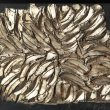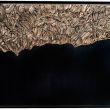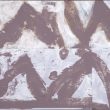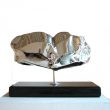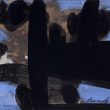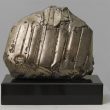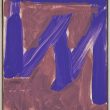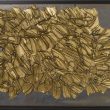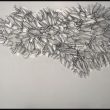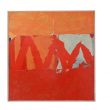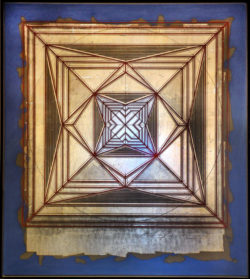George Dunbar
George Dunbar has been a major figure in New Orleans contemporary art for more than five decades.

Courtesy of Michael Wilkinson
Coin du Lestin XII. Dunbar, George (Artist)
To create beauty in art, New Orleans artist George Dunbar once said, the artist must “get close to ugliness.” Dunbar, who has gained national acclaim for his “action paintings” and for sculptures incorporating gold and silver-leaf on clay, has been a major figure in New Orleans contemporary art for more than five decades, beginning in the mid-1950s. His art, which he describes as “accidental triumphs,” is about visual elegance, craftsmanship, and design.
Born in New Orleans on September 20, 1927, Dunbar graduated from the Tyler School of Art in Philadelphia, Pennsylvania, in 1951, and the Grande Chaumiere in Paris, France, in 1953. Dunbar chose the Tyler School because it was close to New York City, which had supplanted Paris as the center of contemporary art. In the post-war era, Abstract Expressionists Robert Motherwell, Jackson Pollock, Mark Rothko, and Franz Kline, among others based in New York, were taking center stage in the art world. Dunbar credits Franz Kline, and to a lesser extent Motherwell, Rothko, and Willem de Kooning, as having had considerable influence on his early work. In the early 1950s, young Dunbar and Kline, then a mid-career artist, exhibited their work together at a small gallery in Philadelphia. Dunbar later became an early force in introducing contemporary art to New Orleans in the 1950s.
For more than a half-century, Dunbar’s paintings and sculpture have been featured in numerous exhibitions from New York to New Orleans, including one-artist shows at the Ogden Museum of Southern Art in New Orleans in 2007 and at the New Orleans Museum of Art in 1964 and 1997. In the catalogue accompanying the 1997 show, British art critic Edward Lucie Smith praised Dunbar’s talent and place in American art. “George Dunbar occupies a unique position in the recent history of the visual arts in New Orleans,” Smith wrote. “On the one hand he is as he himself declares, ‘a local yokel,’ and on the other he is a maker of work with universal implications. The story of his career is full of resonances for students of the contemporary American cultural scene.” Dunbar’s studio is located on Bayou Bonfouca in rural eastern St. Tammany Parish.
Dunbar’s paintings and sculpture can be found in scores of private and public collections such as the New Orleans Museum of Art; the Ogden Museum of Southern Art; the British Museum in London, England; the Rose Museum at Brandeis University in Waltham, Massachusetts; the Alexandria Museum of Art in Louisiana; Tulane University Law School in New Orleans; the North Carolina Museum of Art in Raleigh; and Masur Museum of Art in Monroe, Louisiana.
Dunbar has received various honors and awards for his work. In 2001, he received the City of Slidell’s Bravo Award and the New Orleans Museum of Art’s Delgado Society Distinguished Art Award. In 1995, the New Orleans Contemporary Arts named him a Silver Circle Artist.
Please click below to view images
All rights reserved.
*The Louisiana Endowment for the Humanities has included this work in 64parishes.org for the purposes of criticism, comment, teaching, scholarship, educational research, all other nonprofit educational usages under Section 107 of the U.S. Copyright Act

